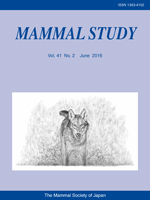We used a species distribution model to characterize habitat use by red wolves, Canis rufus, on the Albemarle Peninsula of North Carolina, USA. Using more than 4,000 VHF telemetry locations of 178 individual animals from 1999–2008, we quantified habitat use and modeled potential habitat suitability of red wolves. Areas of agriculture where secondary road density was high (up to 1 km/km2) and human population density was low (less than 1.67 individuals/km2) were most suitable. Our study supports the baseline knowledge of red wolf suitable habitat, and shows that red wolves will use habitats altered by humans and occupied by humans at low densities. This research represents the use of the most comprehensive red wolf VHF telemetry dataset for habitat suitability modeling to date, and the results should contribute to the growing knowledge of suitable red wolf habitat. This knowledge is critical to identifying future reintroduction sites and protecting the future of this species.
How to translate text using browser tools
1 June 2016
Habitat Use by Adult Red Wolves, Canis rufus, in an Agricultural Landscape, North Carolina, USA
Melissa Karlin,
Tomáš Václavík,
John Chadwick,
Ross Meentemeyer
ACCESS THE FULL ARTICLE

Mammal Study
Vol. 41 • No. 2
June 2016
Vol. 41 • No. 2
June 2016
Canis rufus
habitat use
MaxEnt
North Carolina
red wolves




